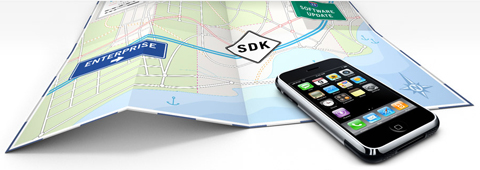
Last week, Apple quietly slipped out a software update for the iPhone (v1.1.4). No press release (not one that I can find anyway), no drama (at least when I looked last night the Apple website was trumpeting the January iPhone update – no mention of the late-February one), and no software development kit (SDK) by the end of February 2008 as promised. What was happening?
Tonight I picked up the real news (via Garry Martin and Steven Bink) – Apple is pleased with it’s market share in the US (claiming 28% of the smartphone market) and is going after the enterprise. And in order to stand any chance of getting corporates to adopt the iPhone, they have licensed Microsoft ActiveSync. This is really good news for me. No more messing around with IMAP for connection to Exchange Server – real push e-mail, calendar integration, contact synchronisation, global address list lookup, IPSec VPNs, two-factor authentication (certificate-based), enterprise Wi-Fi (WPA2/802.1x), security policy and device configuration tools, and remote wipe capabilities.
I still have some other items to add to my ideal feature list – cut/paste and a task list application for starters – but it was great to hear Apple selling the Exchange Server push e-mail architecture and pointing out how BlackBerry is “the old way”…
So, what about that much-anticipated SDK? Well, Apple is opening up the same APIs and tools that they use internally, from today. It looks pretty sweet – I reckon even I could write an iPhone native application with this (although I’ll leave Keni to tell me how it compares to developing for Windows Mobile).
Once the applications are written, how do they get onto the iPhone? Apple has announced a new online store – the AppStore, accessible from every iPhone running the next software release (not using the iTunes store as previously predicted by some – although the iTiunes client will be able to access the AppStore). Key features include wireless application download (cell network or Wi-Fi) and automatic updates and this will be the exclusive method for the distribution of iPhone applications. It’s a pretty good deal for developers too (apart from the $99 to become one): they can pick the price and take a 70% revenue share, paid monthly; there will be no credit card, hosting or marketing fees (even if the application is free); but there will be some limitations around the types of applications that will be allowed (I wonder if there will there be a conflict of interest between mobile operators and VOiP client developers?)
Finally, what’s the charging mechanism for iPhone 2.0 update that will be required to access the new applications? I was pleased, and surprised to hear that it will be a free update including both the SDK and the new enterprise capabilities and is expected to ship in late June (there will be a small charge for iPod Touch users to receive the same update).
All of a sudden, being an early iPhone adopter (and chosing a supported route rather than unlocking/jailbreaking) is not looking like such a bad move.
Links
Apple iPhone Dev Center
Q&A: Microsoft Helps Connect Apple iPhone Users to Microsoft’s Exchange Server